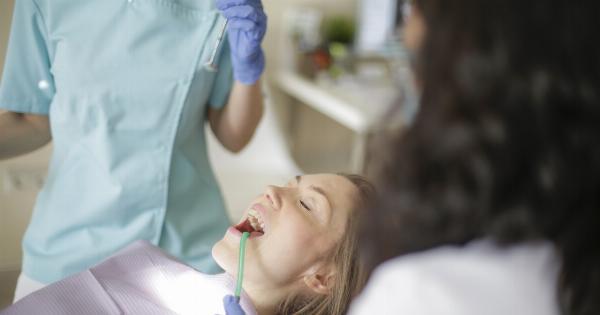Everyone desires a bright and radiant smile, and teeth whitening has become a popular solution for achieving this goal.
With numerous commercial products and professional treatments available in the market, it’s essential to understand the truth about teeth whitening before diving in.
Understanding Teeth Stains
Before embarking on a teeth whitening journey, it’s important to comprehend the different types of stains that can occur on our teeth. Teeth stains can be categorized into two main types: extrinsic and intrinsic stains.
Extrinsic Stains
Extrinsic stains are superficial stains that occur on the outer layer of the tooth, known as the enamel. These stains are often caused by external factors such as diet, smoking, and poor oral hygiene.
Common culprits include coffee, tea, red wine, tobacco, and certain foods with strong pigments.
Extrinsic stains are generally easier to remove through teeth whitening methods and respond well to over-the-counter whitening products.
Intrinsic Stains
Intrinsic stains, on the other hand, occur within the tooth’s structure or dentin. These stains are usually deeper and more challenging to eliminate.
They can be caused by various factors such as aging, trauma, excessive fluoride exposure during tooth development, and certain medications.
Teeth whitening methods may not completely remove intrinsic stains, and alternative dental procedures such as veneers or bonding may be required to achieve the desired level of whiteness.
The Science Behind Teeth Whitening
Teeth whitening works by utilizing agents that break down stains into smaller, less concentrated pieces, making the color less visible and teeth appear whiter.
There are two main types of teeth whitening methods: at-home whitening and professional dental treatments.
At-Home Whitening
At-home whitening options include whitening toothpaste, whitening strips, and whitening trays with gel. These products generally contain peroxide-based bleaching agents such as hydrogen peroxide or carbamide peroxide.
Whitening toothpaste is the mildest form of teeth whitening. It contains polishing agents and minimal amounts of hydrogen peroxide to remove surface stains. However, they may not be effective against deeper stains.
Whitening strips are thin, flexible plastic strips coated with a gel containing peroxide. They are applied directly onto the teeth and left for a specified duration. While they can provide noticeable results, they may not cover the entire tooth surface.
Whitening trays with gel are custom-fitted trays filled with a peroxide-based whitening gel. The trays are worn for a specific period, usually a few hours a day or overnight, depending on the product.
This method offers more comprehensive coverage of the teeth and can yield better results.
Professional Dental Treatments
Professional teeth whitening treatments are typically performed at the dentist’s office or under their supervision at home using customized trays.
These treatments involve higher concentrations of bleaching agents and can provide faster and more significant results compared to at-home methods.
In-office treatments often use a stronger bleaching agent activated by a special light or laser. This quickens the whitening process for a noticeably brighter smile in a single visit.
On the other hand, supervised at-home treatments involve using custom trays provided by the dentist with a carefully measured bleaching gel.
The Pros and Cons of Teeth Whitening
While teeth whitening can provide several benefits, it’s essential to consider both the advantages and disadvantages before deciding on a whitening method.
Pros of Teeth Whitening
– Improved Aesthetics: Teeth whitening can significantly enhance the overall appearance of your smile and boost self-confidence.
– Non-Invasive: Teeth whitening methods are generally non-invasive and do not require any complex or painful procedures.
– Convenience: Many at-home whitening options provide convenience and can be incorporated into your regular oral hygiene routine.
– Cost-Effective: At-home whitening products can be more affordable than professional treatments and offer satisfactory results for mild to moderate stains.
Cons of Teeth Whitening
– Tooth Sensitivity: Teeth whitening can cause temporary tooth sensitivity, especially when using higher concentrations of bleaching agents.
– Gum Irritation: Some individuals may experience gum irritation or mild inflammation during the whitening process. This is usually temporary and subsides after treatment.
– Limited Effectiveness on Intrinsic Stains: Teeth whitening methods may not provide satisfactory results for deep-seated intrinsic stains.
– Temporary Results: The effects of teeth whitening are not permanent, and the longevity depends on various factors such as oral hygiene, diet, and lifestyle habits.
Consultation with a Dentist
Prior to beginning any teeth whitening regimen, it’s recommended to consult with a dentist. A dental professional can evaluate the condition of your teeth, determine the cause of stains, and suggest the most appropriate whitening method.
If you have intrinsic stains or other dental issues that may hinder the effectiveness of teeth whitening, the dentist may propose alternative cosmetic treatments.
Maintaining a White Smile
After achieving your desired level of teeth whitening, it’s important to implement good oral hygiene practices to maintain the results. This includes regular brushing, flossing, and routine dental visits.
Additionally, avoiding or minimizing the consumption of staining agents like coffee, tea, and red wine can help prolong the whiteness of your smile.
Conclusion
Teeth whitening offers a promising solution for achieving a brighter smile. Understanding the different types of stains, various whitening methods available, and the pros and cons of each approach is crucial in making an informed decision.
A consultation with a dental professional can provide personalized recommendations and ensure optimal results.
Remember that maintaining good oral hygiene practices and making lifestyle adjustments are key to enjoying a white and dazzling smile for as long as possible.























